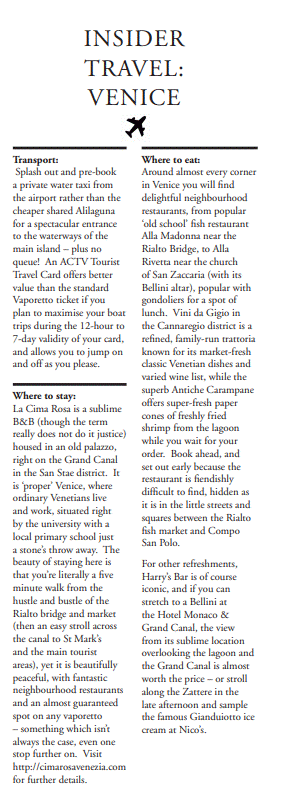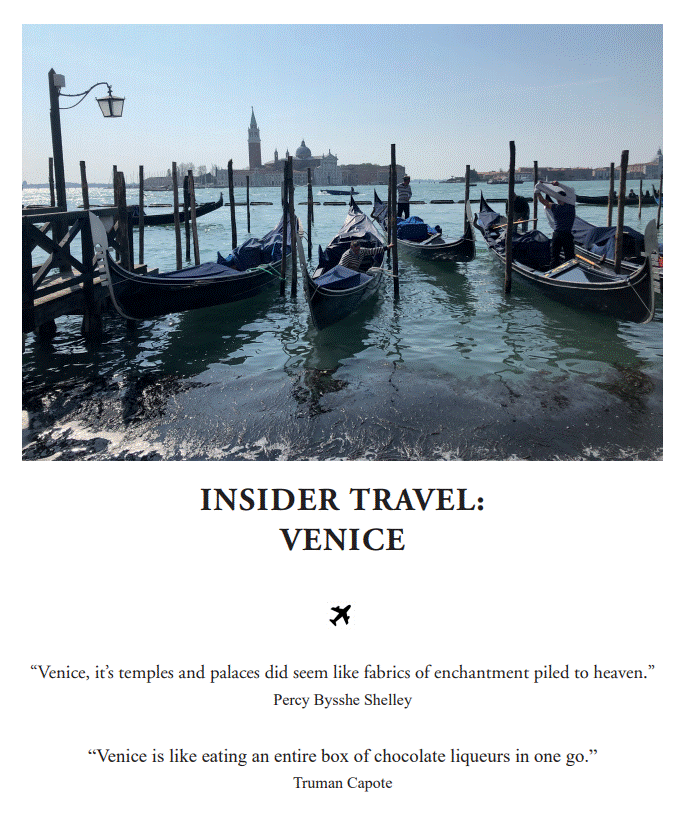
Venice. Simply the word conjures up a wealth of enchanting images – an island city of marble palaces built on a lagoon. Still a major seaport, it was once the centre of a maritime republic, the greatest seaport in late medieval Europe, and the continent’s commercial and cultural link to Asia. One of the world’s oldest tourist and cultural centres, it has held an unrivalled place in the Western imagination since the fall of the Venetian republic in 1797, and has been described endlessly in both prose and verse.
The atmosphere and beauty of Venice is like no other city – the sight of its ornate palaces, frescoes, bell towers and domes reflected in the sparkling waters of the lagoon is simply incomparable. Its thousand-year economic and political independence was sustained by its role in global trading, so it seems fitting that it is today recognised as part of the artistic and architectural patrimony of mankind. The city is an extraordinary architectural masterpiece in which even the smallest building contains works by some of the greatest artists the world has seen – Giorgione, Titian, Tintoretto, Veronese, Canaletto to name but a few – and the lagoon has one of the highest concentrations of masterpieces in the world, from Torcello’s Cathedral to the church of Santa Maria della Salute. The years of the Republic’s extraordinary Golden Age are represented by monuments of incomparable beauty: San Marco, Palazzo Ducale, San Zanipolo, Scuola di San Marco, Frari and Scuola di San Rocco, San Giorgio Maggiore – the list is endless.
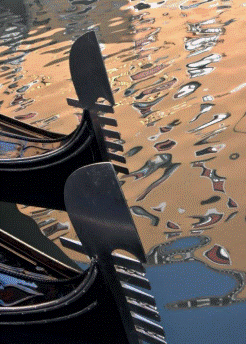

A must for all numismatists, of course, is the Museo Correr, a hugely ambitious museum charting the history of Venice from the 13th to the 16th century through its collection of paintings, prints, coins, weapons, military regalia, and almost any man-made objects that have survived from medieval and Renaissance Venice. Located in St Mark’s Square, it is one of the 11 civic museums run by the Fondazione Musei Civici di Venezia and extends along the south side of the square on the upper floors of the Procuratorie Nuove. Room 11 displays an almost complete series of coins minted by the Venetian Republic from its origins in the early 9th century AD to its fall in 1797, plus some 18th-century machinery from the Mint and medals, together with the Tintoretto painting Saint Justina and the Treasurers.
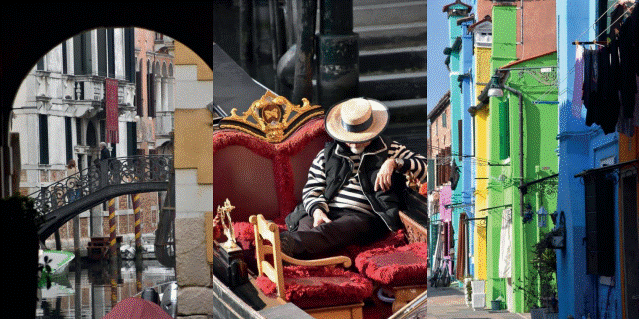
St Mark’s Basilica, also in St Mark’s Square is, of course, a must for first time visitors, but if visiting between April and November the queues can be extremely long. Skip the Line entry tickets are available from www.venetoinside. com, and are well worth the cost of €3 per adult! The Doge’s Palace is another must-see, but do book if you intend to go, or arrive as it opens at 8.30am – we were lucky enough to walk straight in without any queues and almost had the whole palace to ourselves. For the best view of the city take a vaporetto from almost outside the Palace (San Giorgio, lines 2 and N) to the Basilica of St Giorgio Maggiore (which also contains a number of Tintorettos) and take the lift to the top of the campanile, where the whole of the lagoon can be viewed in relative privacy. It is almost as high as the Campanile di San Marco, and you won’t need to worry about climbing the stairs …
It goes without saying that EVERYTHING in Venice is best done early, before the crowds build up, and you can enjoy the relative peace and quiet of the canals without the ubiquitous gondolas full of tourists. However, the best way to see the city is on foot: walking through back streets, crossing bridges at random and discovering little gems – the under-visited Scoula di San Giorgio degli Schiavoni in Castello, covered with intricately detailed paintings of patron saints by the Renaissance master Vittore Carpaccio, for example – is one of the great pleasures of spending time in this incredible city.
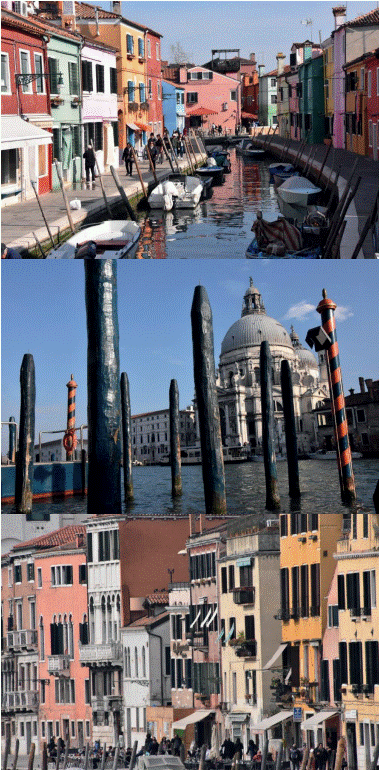
Murano, Burano and Torcello:
These lagoon islands are well worth a visit if you have time, and are famous for their glass (Murano), lace (Burano), and cathedral (Torcello). Murano is only a short boat ride away from the main island, and boasts its own Grand Canal – though with a lot less traffic. The streets are far less crowded than on the main island, and you can still see artisans making handcrafted glass in a number of foundries scattered around its charming streets. Visit the Murano Glass Museum, also known as Museo del Vetro, which was founded in 1861 and shows the evolution of Venetian glass blowing techniques over the years.
One of the prettiest islands on the Venetian lagoon, Burano’s brightly coloured fishermen’s houses are picture perfect, and said to have been painted so that sailors could see them from the sea on foggy days. It is known for its 16th century lace-making tradition, and walking around you can often see women perched on chairs weaving intricate and beautiful designs handed down from mother to daughter. Trattoria al Gatto Nero is the perfect spot for an al fresco lunch on a warm day, and is said by chef Angela Hartnett to serve the best seafood risotto in the world!
The marshy island of Torcello is said to be the first of the lagoon islands to be inhabited and was a thriving centre for about 20,000 people from the 7th to 11th century – it now only has around 30 residents, and is used as a refuge by Venetians from the main island to escape the tourist hotspots. Visit the Basilica di Santa Maria Assunta with its spectacular Venetian-Byzantine mosaics, enjoy views of Burano from the bell tower, or check out the Ponte del Diavolo, a bridge with no parapets, and the stone seat known as Trono di Attila.
